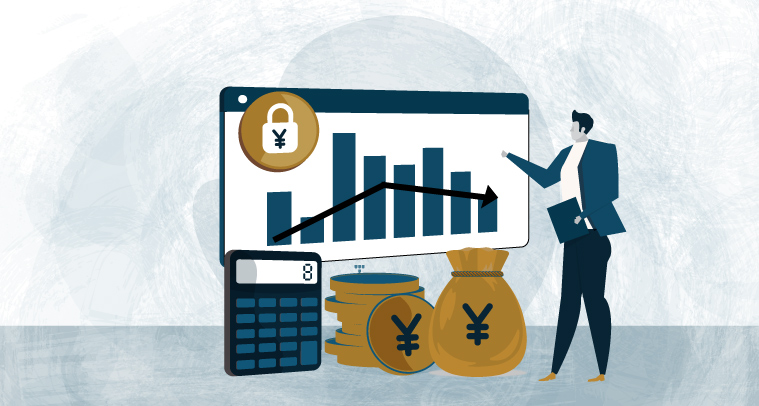
One of the most important mandates of government is to ensure economic welfare and keep prices stable. Most governmental organisations recognize that prices of basic goods and services will fluctuate from time to time. However, curbing the size and volatility of these fluctuations is paramount in ensuring a healthy economy.
To this end, government will exert influence by either setting key rates and rules or by participating directly in their markets (especially their capital markets). The purchase and sale of government debt in the form of bonds (i.e., open market operations) is a major tool for market intervention. This requires significant spending and has the potential to increase liquidity and soften an economic downturn.
In Japan, this intervention has created an interesting situation in which government actions have created a market that is conducive to what traders call a “carry trade”.
The origins of Japan’s bond-buying programme
After World War II, the Japanese government, with aid and support from the US, engaged in economic reform to rebuild their war-torn economy. Wide-sweeping reforms assisted the country in rebuilding an industrial and manufacturing base. This, along with international assistance, helped to reintegrate the Japanese economy into the global economic system and geared them towards export-led growth. This led to high levels of economic growth between the 1950s and 1970s. During the 1980s, growth started to slow down, and by the 1990s it came to a halt. Low growth then became deflationary and started to hurt the economy.
A period of low growth and falling prices (deflation) set in during the early to middle 1990s. To combat this, the government initiated quantitative easing (QE) – one of the first examples of QE in the modern world. QE entailed cutting interest rates dramatically (interest rates remained at 0% for much of the 2000s and even fell to negative) and buying significant amounts of government bonds on the open market.
The bond-buying programme injected liquidity into the Japanese economy with the aim of driving inflation higher. However, it did not have much of an impact on the economy as inflation (and growth) remained low for most of the 2000s.
Carry trade
These developments caused Japan’s interest rates to fall to one of the lowest in the world, which made the Japanese Yen ripe for what traders call the “carry trade”. A carry trade is, in essence, a situation in which a trader can borrow a local currency at a low rate, purchase a foreign currency in whose country of origin a higher interest rate exists. This money would then be invested in the foreign country at their higher rate of return for a fixed period. The trader would then purchase back the currency (the Yen in this case) and repay their loan. Their profit would then be the difference in the rates of return between Japan and the other country’s currency.
This works best when the borrowed currency is stable over the holding period. Any large fluctuations have the potential to not only wipe out any profits from the carry trade but also cause significant loss.
See also: How currency exchange rates are determined
Recent developments
Recently, at the end of pandemic stimulus programmes, most central banks have engaged in a rate hike cycle to curb inflation in their respective economies. However, the Bank of Japan (BoJ) chose to keep rates low to in fact boost their historically low inflation. This brought the classic carry trade back into the spotlight as Japanese interest rates were lagging far behind those of other developed countries and traders were once again able to borrow at low-interest rates.
It did, however, become challenging as volatility in the Yen increased significantly. One major contributor to this were developments in the Japanese bond markets, driven by the BoJ.
The BoJ has continued to engage extensively in the country’s capital markets, most prominently in its bond market, since the early 1990s. In fact, it is one of the biggest actors in the local bond market, reportedly owning almost half of all 10-year bonds.
While the BoJ injects significant amounts of liquidity into the market through these asset purchases, this also has the effect of pushing up asset prices and decreasing bond yields. As a result, private investors were crowded out.
To curb the recent volatility in the price of bonds, the government instilled a cap on price movement. For example, currently the 10-year bond price is not allowed to move 0.5% in any direction. Although this policy did assist with stabilizing the bond market, it has also distorted bond prices for private investors by keeping yields low.
Any indication of rate changes has been known to upend the Yen’s stability as it undermines the carry trade potential. The Yen price can also fall significantly when the government sells bonds in the open market as this essentially increases the money supply. There is a desire from many actors (investors and the IMF mostly) for bond prices to be market determined. This has not been forthcoming as the BoJ will have to relinquish control of the price of their debt. This in turn will have implications for the value of the JPY and the cost of debt overall.
The value of bonds is another important factor. Higher rates of return (bond yields) make bonds more attractive for foreign investors. However, this may hamper the carry trade as rates of return are no longer low enough to justify carrying the currency overseas.
Takeaway
Government has various reasons to want to control the price and cost (in terms of bond yields) of their debt. The most important of which is to be able to afford the funding of their day-to-day operations and to stimulate economic activity. As seen in the Japanese case, this control can have spillover consequences for capital markets and the local currency.
Commentators are hoping that the Japanese government will increase the movement band of bond prices and yields in the near future to be more market related. Investors and traders are keenly anticipating who the next BoJ governor will be, and how their policy priorities might shift the value of the JPY and the Japanese economy in general.
(Contribution by Justin Fortuin)
